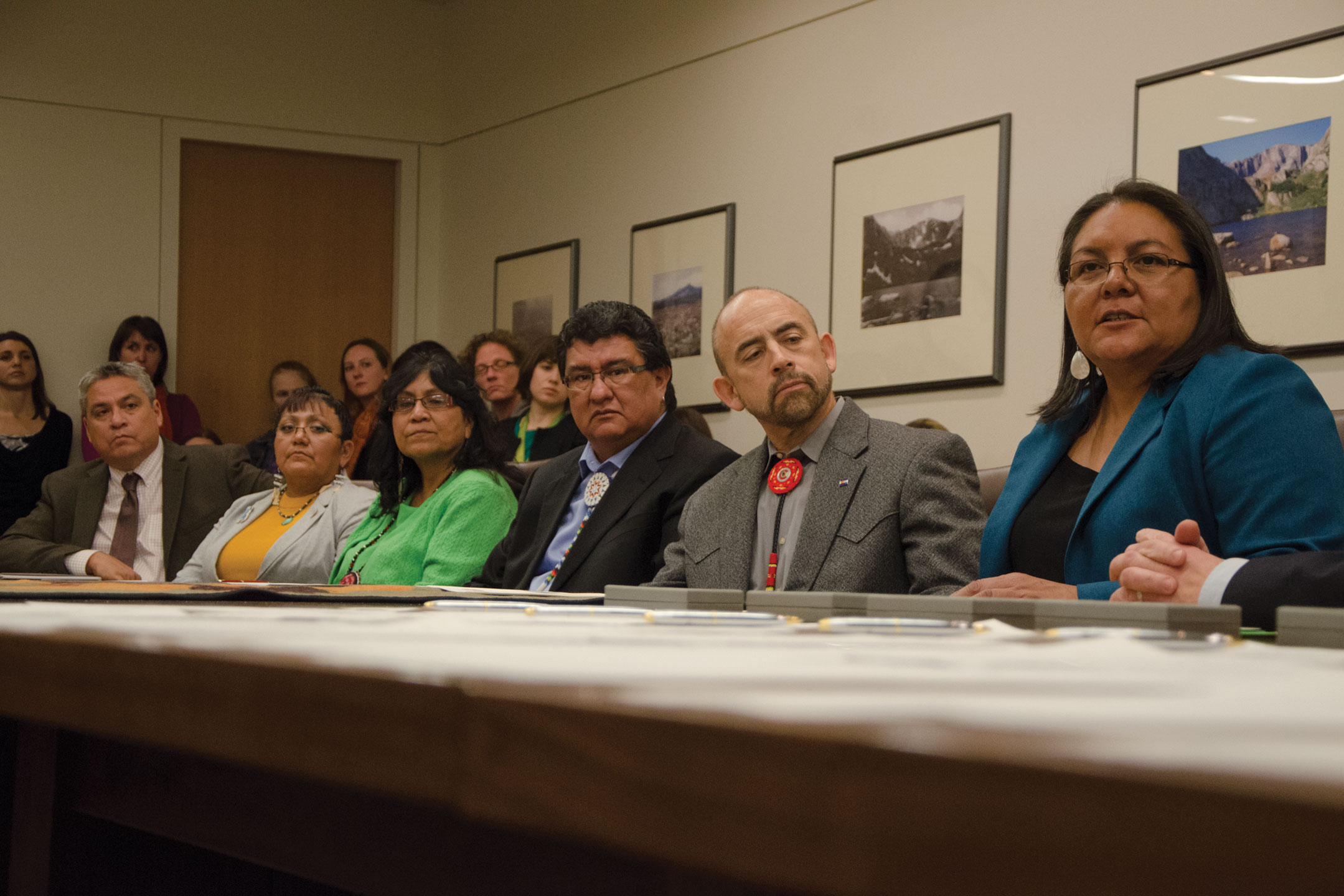In 1990, the Native American Graves Protection and Repatriation Act was established to ensure the return of cultural remains, funerary pieces, and objects of cultural significance to affiliated Indian tribes.
But thousands of these items remain waiting for reburial due to lack of available lands.
Southern Ute Indian Tribal Council Lady Pathimi GoodTracks, along with Manuel Heart, Juanita Plentyholes, and Regina-Lopez Whiteskunk of the Ute Mountain Ute Tribe, assembled Friday, Dec. 13 at the History Colorado Center in Denver for the historic signing of a memorandum of understanding that will help solve the problem.
State and federal agencies participating in the signing included the Colorado Department of Natural Resources, U.S. Fish and Wildlife Service, U.S. Bureau of Land Management, U.S. Forest Service, and the Colorado Commission of Indian Affairs.
“I want to say a heartfelt ‘thank you’ for all the people who worked on this,” GoodTracks said. “There was a lot of hard work, and one of the things I recognized in those agencies and the state of Colorado staff is they understood where the tribe was coming from.”
Ernest House Jr., executive director of the Colorado Commission of Indian Affairs, described the sensitivity of the issue.
“Years ago, when our tribal leaders came to museums and institutions … they would find these Native American [remnants] in boxes and stored away in a locked room, never to be dealt with again,” he said. “There would never be any information as to where they came from or where they went. This has obviously been an issue and one of the first issues that the Colorado Commission of Indian Affairs was created in 1976 to address.”
Ed Nichols, president and CEO of History Colorado, said the agreement was long in the making.
“This is a tribal driven effort that was started a long time ago,” he said. “I think as we look at the accomplishment of having federal, state, and tribal representatives at a single table, I can only express our gratitude of being apart of that and participating in what we do.”
The NAGPRA goes through a process in which museums and agencies determine the rights of certain pieces – funerary objects, cultural remains, sacred items – to the lineal descendants connected to the Indian tribes and Native Hawaiian organizations. If the descendants cannot be identified, the objects go to the associated tribes.
The act does not explicitly address reinterment of these objects. But since its formation in 1990, hundreds of remains have been reburied.
The signing of the memorandum officially began as the representing signatories came to the table one by one. A round of applause roared through the room as history took place.
Manuel Heart, Ute Mountain Ute Tribe chairman, expressed his thanks to the committee.
“Today is an honor for two Ute tribes,” he said. “Honor and respect the heritage of our tribal members that roamed these lands. We have to respectfully put those back into the ground as we strength mother nature in the proper and traditional way as native people.”
“It’s good to be in such a position, with great work that has been done, and for the voice to be heard in terms of leadership,” said Juanita Plentyholes, vice chairman of the Ute Mountain Ute Tribe. “I honor each and every one of you for coming here for such a wonderful point in our history.”
GoodTracks concluded with her thanks.
“When you look at the hallmarks of humanity, it not only includes how you treat the living, but how you treat the [deceased],” she said. “I think we have treated these individuals of our ancestors with that type of dignity. This is definitely going to be a national model that [follows] the testament of the agencies and partners we worked with in looking at challenges and finding solutions. The state of Colorado will once again be at the forefront in clearing a pathway for other states to follow.”

